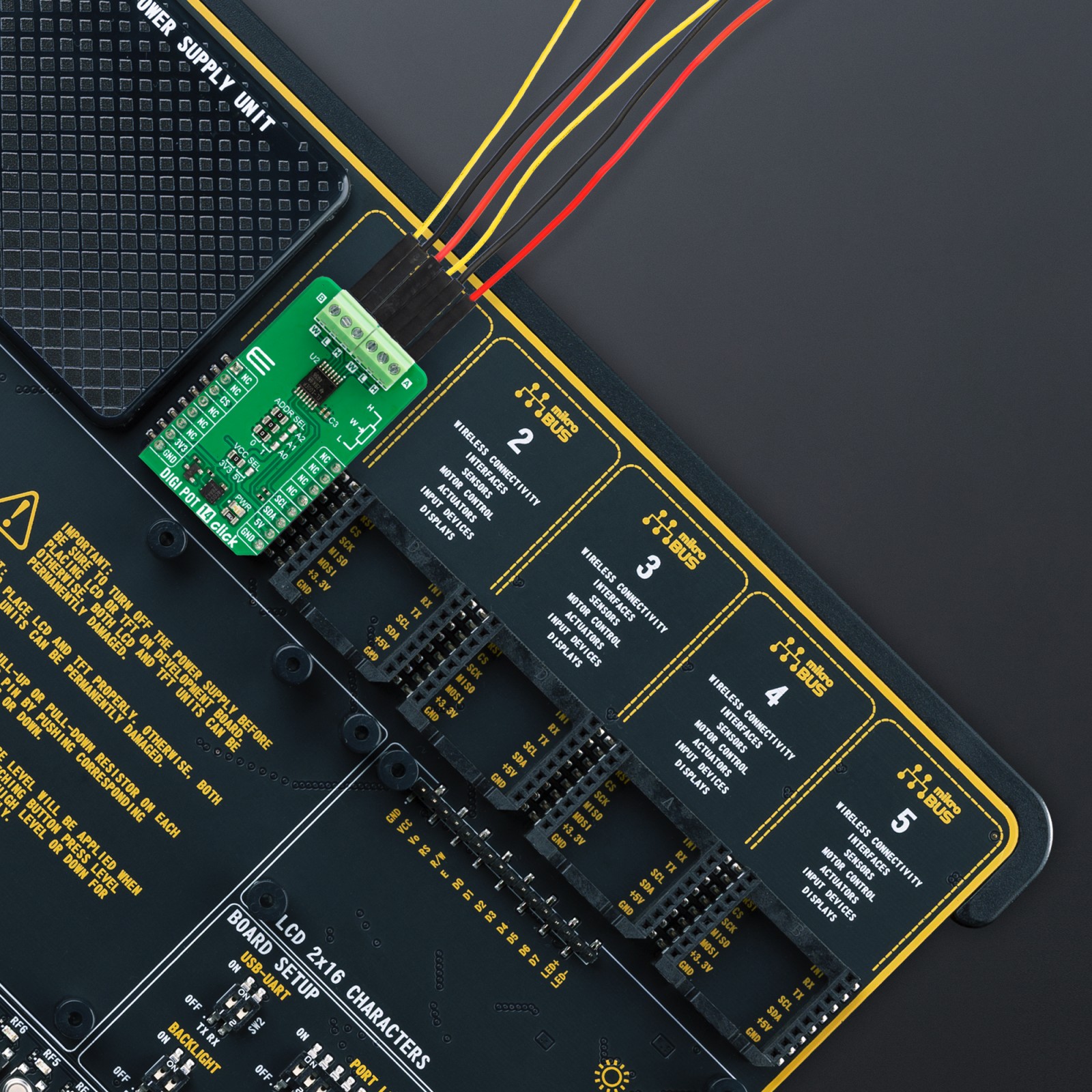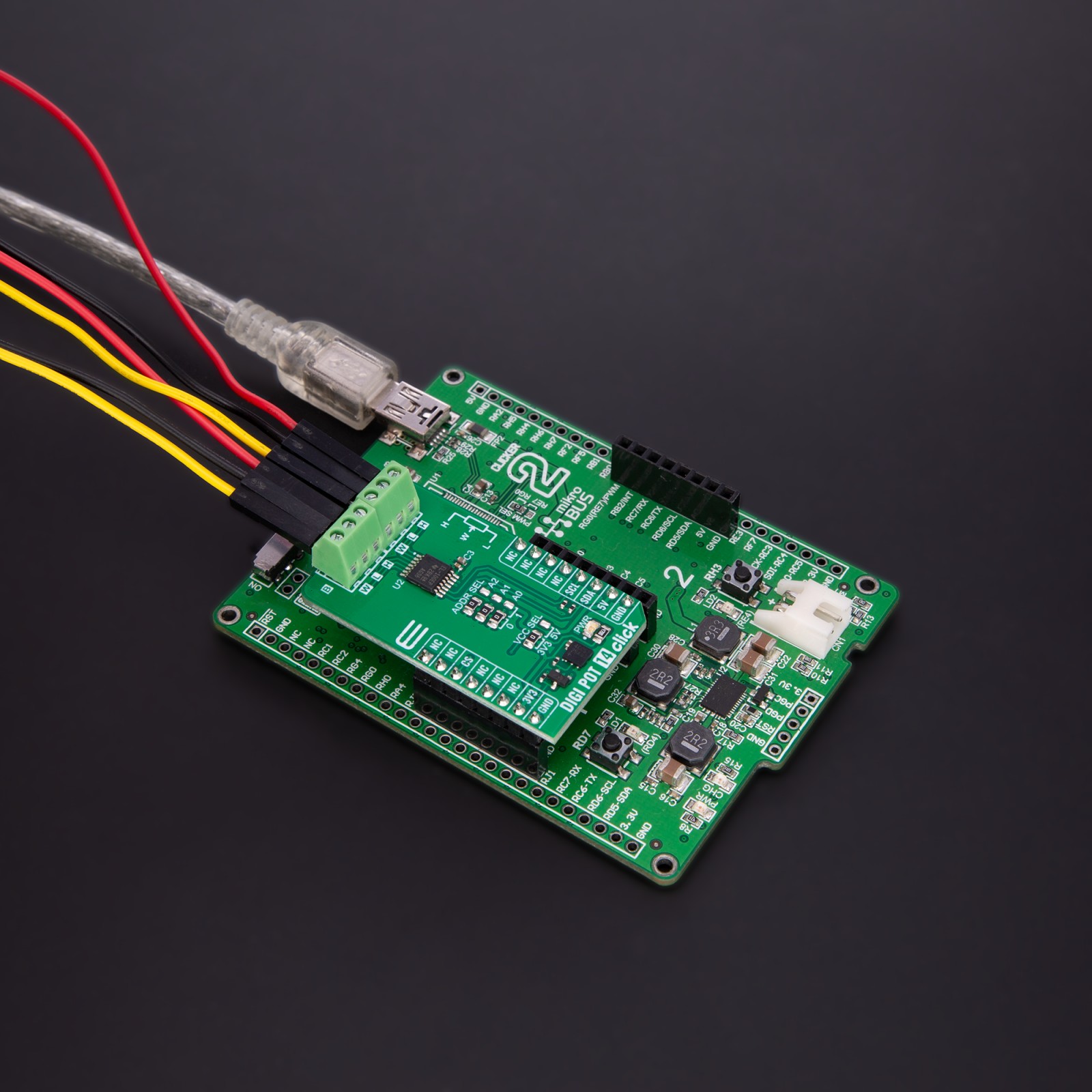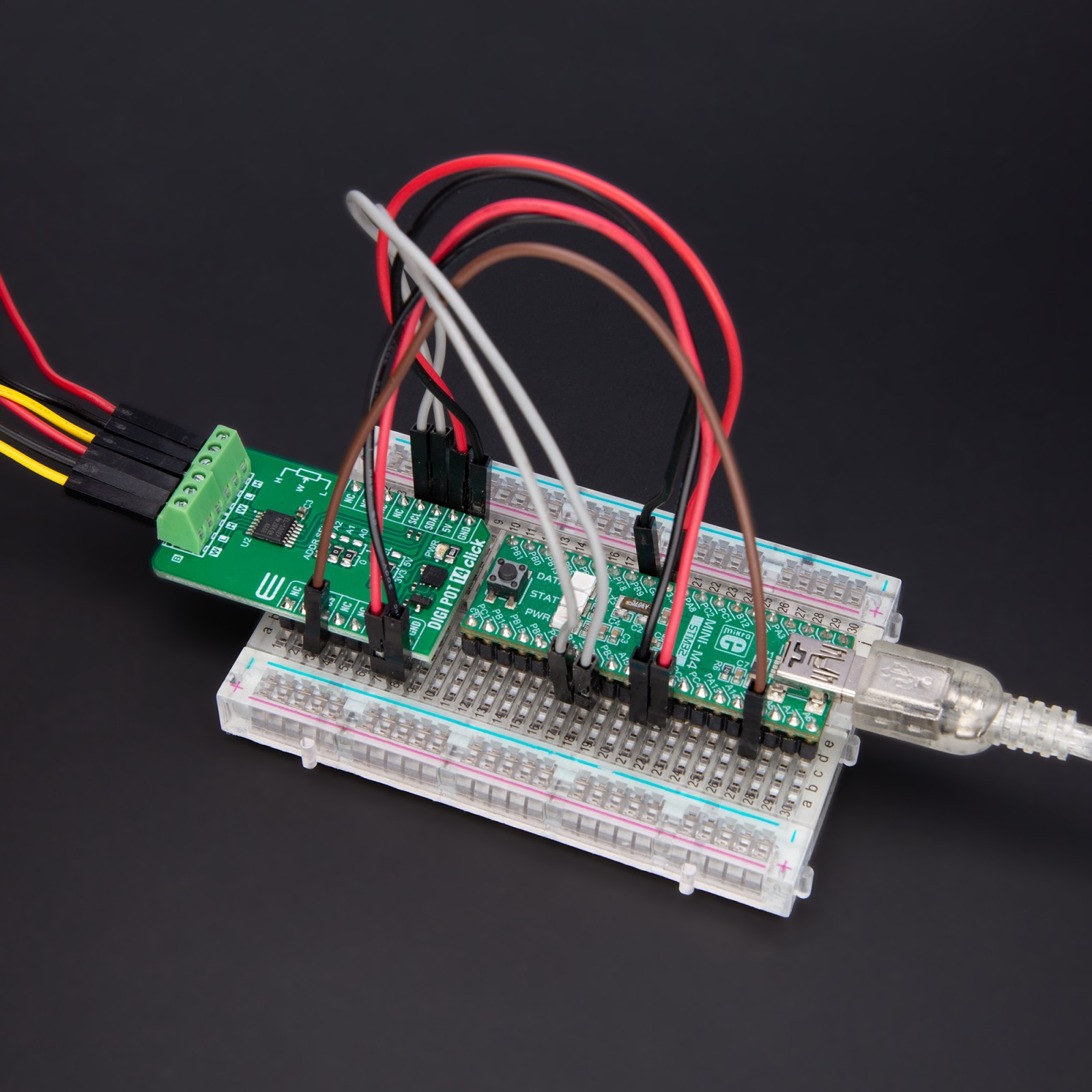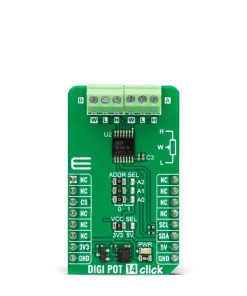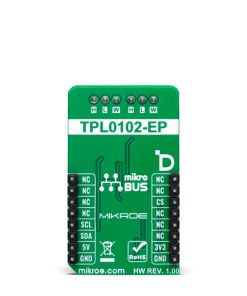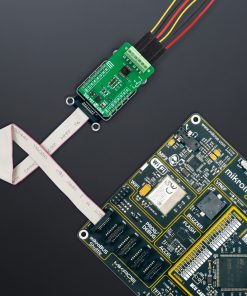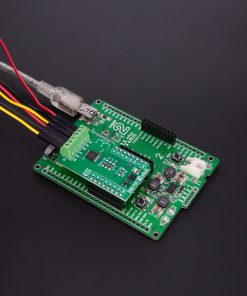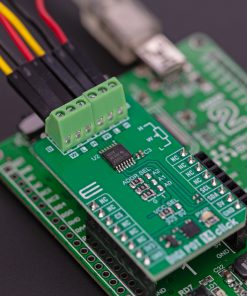DIGI POT 14 Click
R555.00 ex. VAT
DIGI POT 14 Click is a compact add-on board that contains a digitally controlled potentiometer. This board features the TPL0102, a dual-channel digital potentiometer with non-volatile memory from Texas Instruments. It is a 100K resistance end-to-end potentiometer with a 256-position resolution, where the wiper position can be stored in EEPROM. It can operate from both 3.3V and 5V power supplies and provides a typical 92ppm/ºC end-to-end nominal resistance temperature coefficient and only 4ppm/ºC ratiometric. This Click board™ makes the perfect solution for developing adjustable gain amplifiers and offset timing, adjustable power supplies, precision calibration of set point thresholds, sensor timing and calibration, and more.
DIGI POT 14 Click is fully compatible with the mikroBUS™ socket and can be used on any host system supporting the mikroBUS™ standard. It comes with the mikroSDK open-source libraries, offering unparalleled flexibility for evaluation and customization. What sets this Click board™ apart is the groundbreaking ClickID feature, enabling your host system to seamlessly and automatically detect and identify this add-on board.
Stock: Lead-time applicable.
| 5+ | R527.25 |
| 10+ | R499.50 |
| 15+ | R471.75 |
| 20+ | R453.99 |




